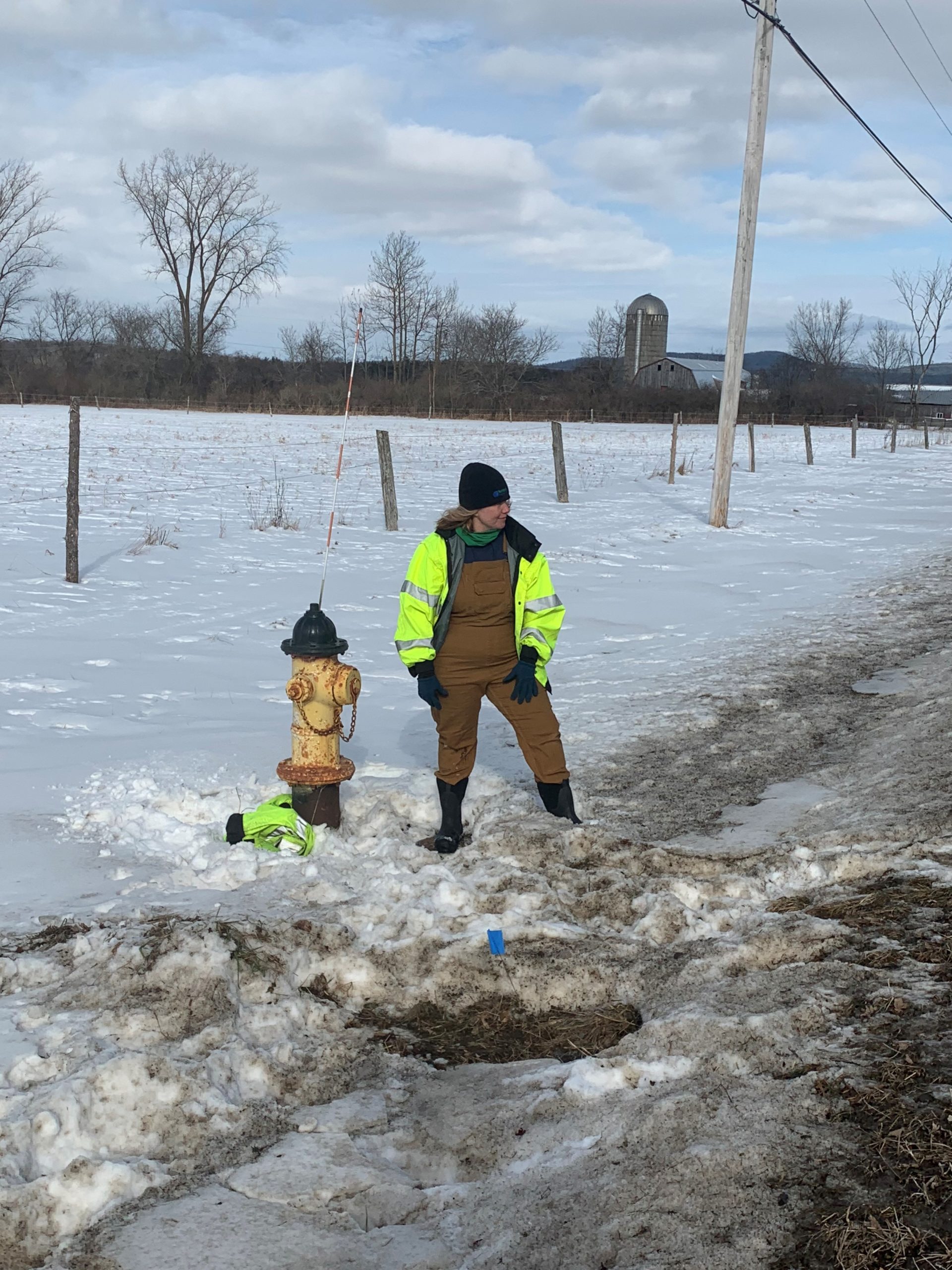by Paul Sestito
This article was published in the winter 2022–2023 issue of our newsletter.
Winter is coming, and it will be cold. I know this is not a surprise to anyone in Vermont, but it is good to take a moment to remember that working outside in cold weather poses special challenges and requires extra precautions.
Cold stress occurs when the temperature of the skin, and eventually the body, drops. This can result in cold-related injury, tissue damage, or even death. There are different types of cold stress including trench foot, frostbite, and hypothermia.
Winter weather also poses hazards like snow, ice, whiteouts, dangerous driving conditions, and power outages. Slips, trips, and falls are an ever-present hazard in the industry, but cold weather and ice have the potential to increase these hazards.

Dress in layers with proper footwear and high-visibility clothing.
Although it is not always possible, avoiding outdoor work in extreme cold weather is the best way to prevent cold-related illness and injury. Create a “punch list” of indoor jobs like interior painting, cleaning, or maintenance projects. Training classes are another way to keep employees out of the elements and get credits towards license/certification renewal.
If cold-weather work is required, proper planning can make all the difference. Plan extra time for the challenges of mobility and visibility that cold temperatures can cause. Take frequent breaks to warm up. Provide extra workers and work in shifts to reduce the time each person spends outside. Hold tailgate safety meetings to remind workers of the safety hazards of cold weather work.
Having the proper personal protective equipment and gear is crucial as well. Dress in layers with insulating clothes like wool or fleece on the inside and a wind-proof/waterproof outer layer. You might also consider heated garmets like heated gloves or a heated vest. There are now a variety of battery-operated heated garments in addition to single-use hand warmers and foot warmers. Proper footwear that fits well and has good traction is especially important on snow and ice. You can also wear microspikes or Yaktrax on your boots for extra traction.
High-visibility clothing is always essential, but especially during the short, and sometimes snowy, days of winter.
Surprisingly, dehydration is a problem in winter because the air is dry and you don’t feel thirsty like you do in hot weather. So be sure to stay hydrated. A thermos filled with warm water can be warming and refreshing when you’re out in the cold.
Some websites to learn more about winter weather safety are:
www.osha.gov/winter-weather
www.weather.gov/safety/cold
If you have any tips for keeping safe in the cold, we would love to hear them. As always, thanks for what you do and stay safe out there!

